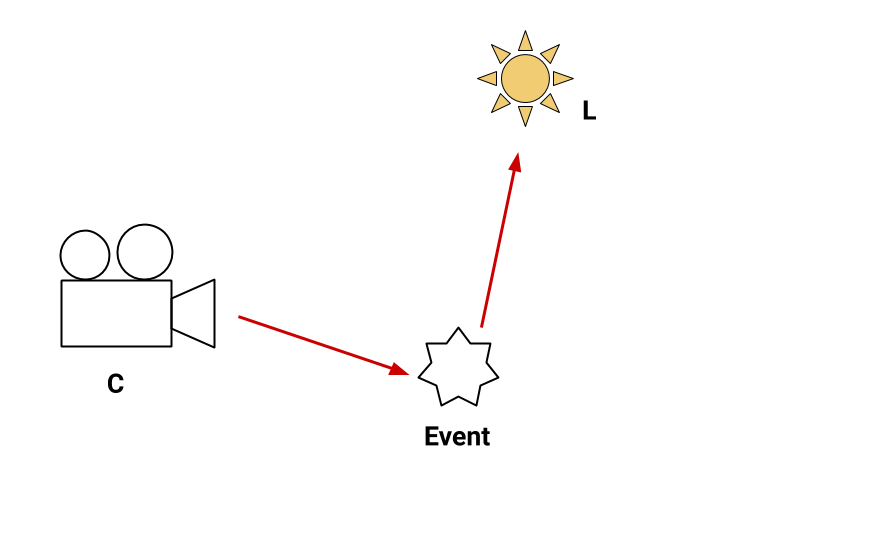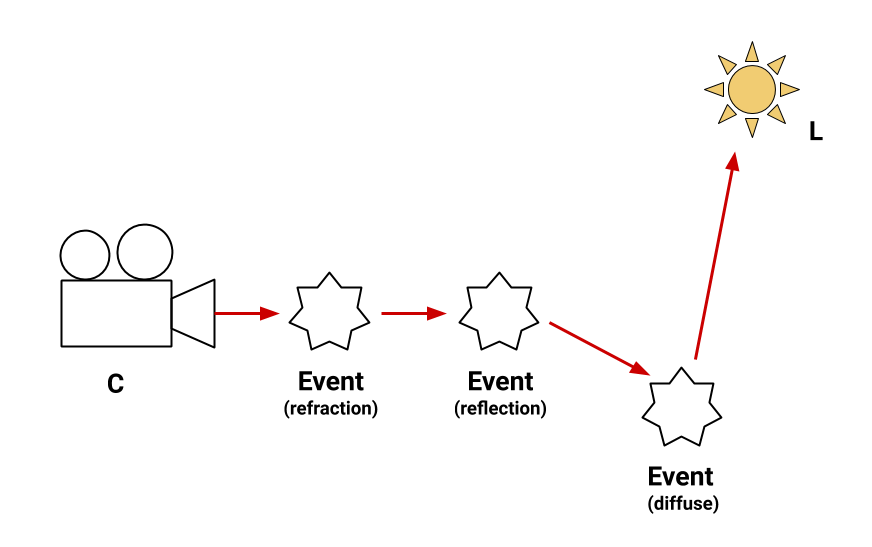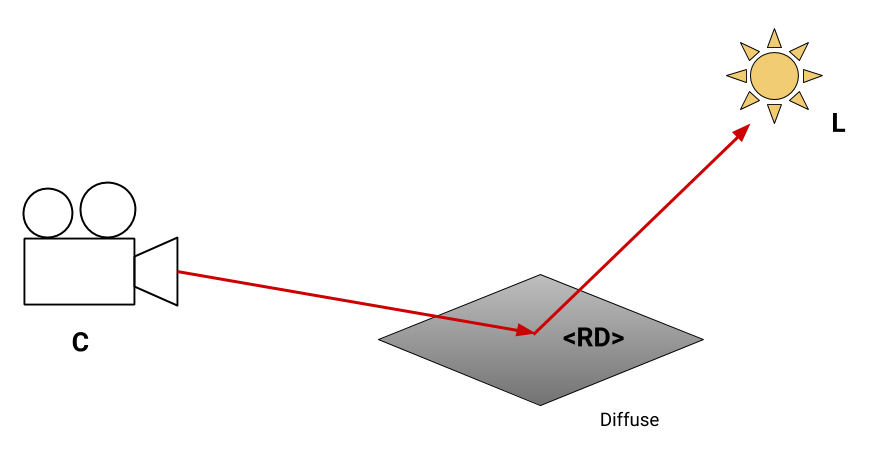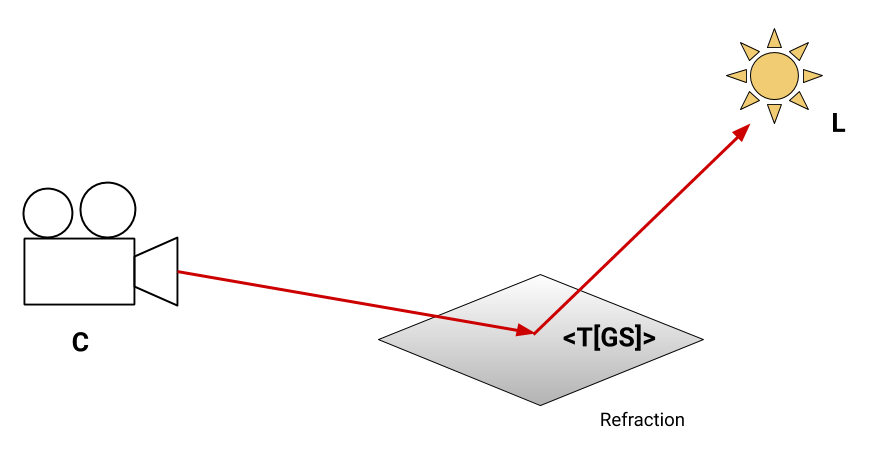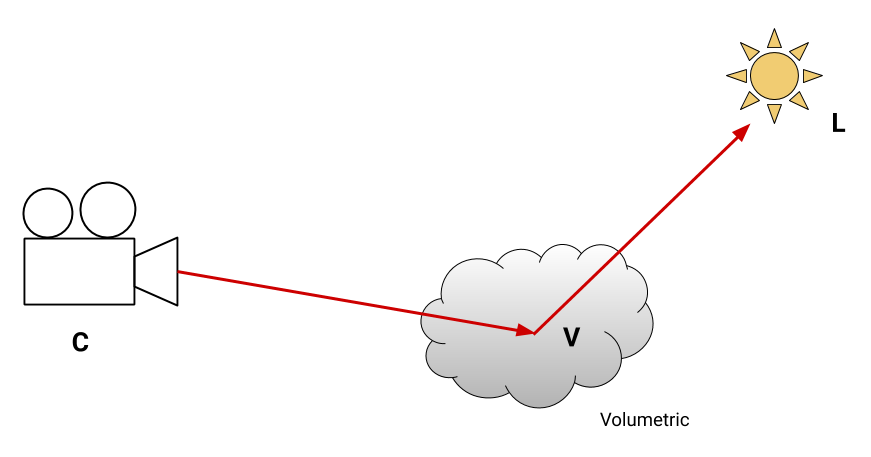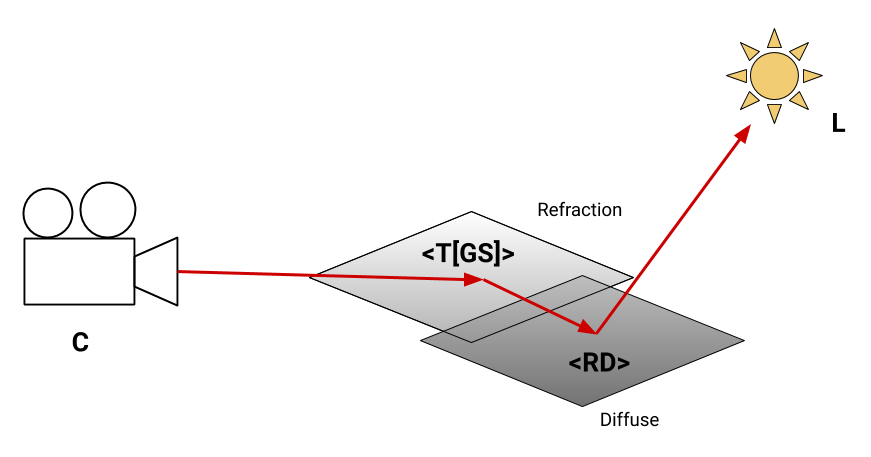Overview
If you are not familiar with using Light Path Expressions (LPEs), this page is a good place to start. The sections below will try to explain what LPEs are, how they work and what are the possible use cases.
The Advanced Light Path Expressions article goes into greater detail about complex LPE usage and concepts.
What are LPEs?
Light Path Expressions are a special type of render element with advanced capabilities. They use regular expression patterns to record selected events of light contribution along the path of a ray.
This can be used for very fine control in compositing by allowing you to tweak, for example, the GI coming from lights, the environment or self-illuminating objects separately, or each separate GI bounce, or the self-reflections of an object or the way SSS is seen behind refraction without re-rendering. The possible applications are practically endless.
Light Paths
Generally speaking, in ray tracing we shoot rays from a virtual camera. Those rays hit different surfaces in the scene and bounce between objects until they are finally terminated at a light source.
Light Path Expressions follow the path of a ray and allow us to ask specific ray hits (which we call events) to be recorded. A ray, and the way an expression is built, always starts from the camera and ends at a light source. The different ray hit events in between is what we capture with LPEs.
To understand how this works, let’s look at the different symbols that make up an expression.
- Starting from the camera, we use the C symbol to designate it.
- When the ray hits a surface and starts bouncing in the scene, we record these ray hit events. In the first series of simple examples, we will not look at the events themselves. We will look at the ray hit events in the next section , where we explain Ray Spawn events and Ray Scatting types.
- Finally, the ray path is always terminated at a light source, which can be a light (L), a self-illuminating object (O) or the background (B) and is designated with these 3 symbols at the end of the expression.
In a simple example, the path or a ray can be represented in this way: camera -> event -> light source.
A single event example - the ray starts from the camera, an event (hit) occurs and the ray is terminated at a light source
Leave the Light Select set empty for contributions from all scene lights, the environment or emissive objects.
Add lights to Light Select set if you want to filter only their contribution.
In a more realistic scenario, multiple events can occur on a ray path. We can select which ones to record, or we can record the accumulation of subsequent events along a path.
For example, we can capture the diffuse reflection (GI) starting from the camera and ending at a light. Or we can record a path that goes through a number of refraction hits, then reflects off another object and ends at a light.
Multiple events example - the ray starts from the camera, makes multiple hits and ends at a light source
Ray Spawn Events and Scattering Types
When a ray hits a surface, it can reflect, refract (transmit), or pass through a volume. These are the ray spawn events which we can record with LPE symbols.
We use the R symbol for reflection and T for refraction and sub-surface scattering.
They can be used directly, e.g. R captures reflections of any scattering type and is also equivalent to <R.>.
We can further specify the kind of hit we want to trace by combining R and T with one or more scattering types - diffuse (D), glossy (G), or singular (S). If we don’t specify that, all scattering types are assumed for our R or T events.
This allows us to filter the results only from diffuse reflection, for example with <RD> or combine glossy and singular reflection <R[GS]> .
By using ray spawn events and scattering types, we can recreate some familiar render elements or create custom single or multiple event expressions.
Right click in the expression field to access a list of the available expression symbols and some presets to get you started.
Read next
The Advanced Light Path Expressions article goes into greater detail about complex LPE usage and concepts.

